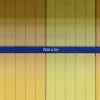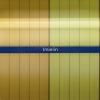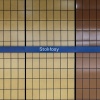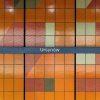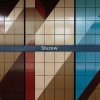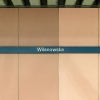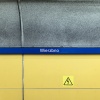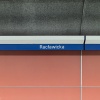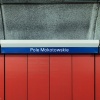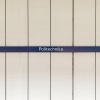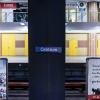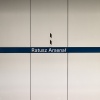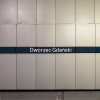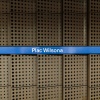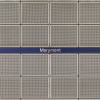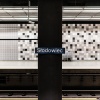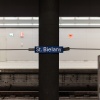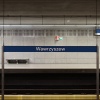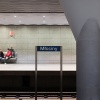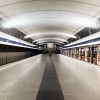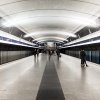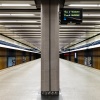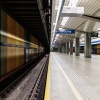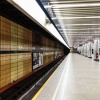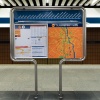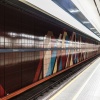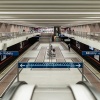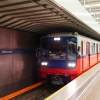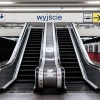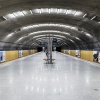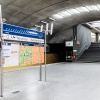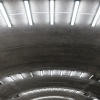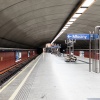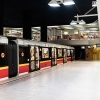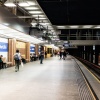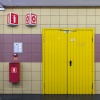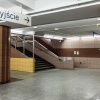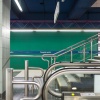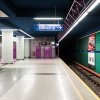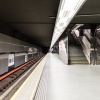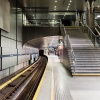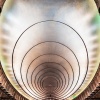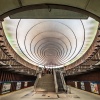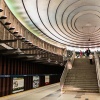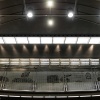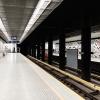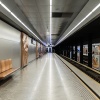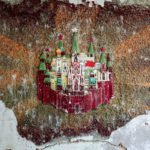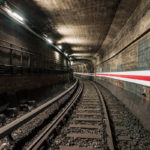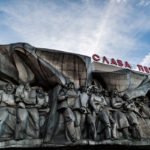One for All and All in One – Warsaw’s Underground
Following the course of Vistula River, Poland’s one and only underground stops at 21 stations in Warsaw’s underground. Consisting of only one single line being in operation, about 370.000 people use the coaches shuttling along the 23.1 kilometres long track. Planning and design actually having started in the 1920’s finally saw and end when in 1995 Metro Warszawskie started operations. It belongs not only to the youngest undergrounds in Europe but also has officially one of the most beautiful stations in the world. Very soon its singlehood will change though as the start of second line operations already loom.
Like many other undergrounds worldwide also the Polish underground has a colour concept. Driving North to South, from Mlociny to Kabaty station, colouring of the walls changes from blue to green and finally brown. Blue stands for Warsaw’s Bielany district, green for all stations belonging to Sródmiescie, that is Warsaw downtown, while brown symbolises all stops at southern Mokotów district.
All stations have something in common as the architects subdivide them into three parts: the public area, the actual station area plus the technical area. Everyone may access the public area, that is for example connected to a pedestrian underpass. The actual train platforms are subject to opening hours and may be accessed by holders of a valid ticket only. Third and last part is the technical area which, of course, may be only entered by authorised personnel. Each area is optically noticeable divided from another by glass or steel elements.
Already long before starting the ride on the Polish U it was clear that due to Warsaw’s ever rising ridership it will become everything than easy and a matter of luck to photograph the underground at normal daytime in the usual manner, meaning using strictly 35mm at aperture 1.4 free-hand while having the time between two trains only to photograph.
While the stops in the very north of the blue line often have side-boarding platforms, all southern and also a few of the central stations, except the stop at Centrum, have a pretty much symmetrically shaped island platform. Generally the first Polish underground line is quite linear and it appears as if you get dragged through Warsaw’s underground dead straight. Of course there are a couple of architectonic gems poking out of the mass, that is for example Plac Wilsona, which became voted in 2008 as the most beautiful underground station of the world by the members of MetroRail, an international summit dedicated to metropolitan development in terms of transportation.
Being engrossed in photography through and through at Imielin station, I make the acquaintance of a technical feature. Embedded into the platform edges are sensors detecting people getting too close to the empty rail track danger zone. Instantly a high-pitched announcement reprehends me. Well, in the face of a subtle progressing Americanisation of the Polish capital (to me that is a loss of Polish sovereignty) I am very happy that no S.W.A.T. team appears to wrest me down and displace me (see Condemnation of Poland over secret CIA torture prisons).
When things already got kicked off in the 1920’s, why did it take so long to make this underground operate? Well, at first there was the world financial crisis being then followed by World War II, which virtually razed Warsaw down to the ground. That situation led to abandoning the construction already being made and planning/designing a completely new underground system. Besides a political stagnation lasting some 20 years it was also Warsaw’s geological peculiarity thwarted the underground.
Due to financial problems the country’s one and only underground line started operations back in 1995 on an 11.5 kilometres track only, but then got extended to the north. In line with that expansion also the Warsaw’s central train station got connected to the underground in 1998, where I am right now boarding the train back home to Berlin. Do widzenia Polska! See you soon again :-) As always all photos got shot at open aperture free hand using the lovely Sigma 35mm f/1.4 DG HSM Art lens. Plac Wilsona cupola got shot with Canon’s EF 16-35mm f/4L IS USM.

